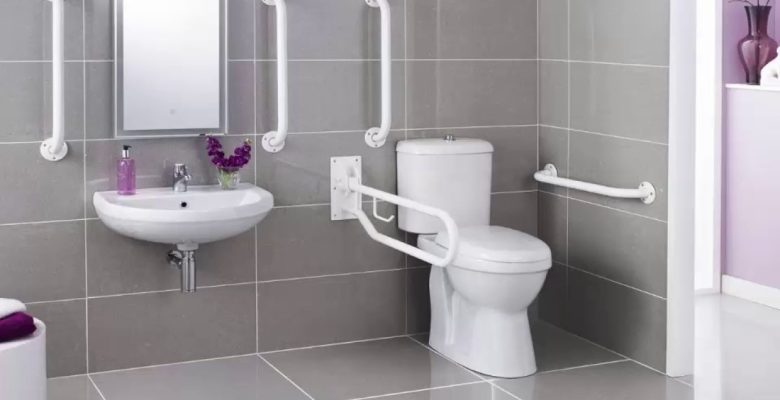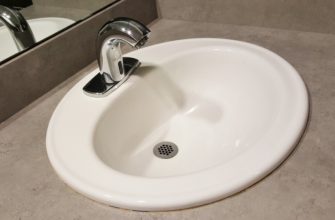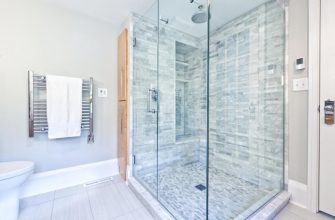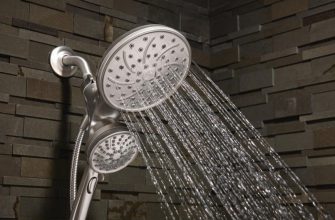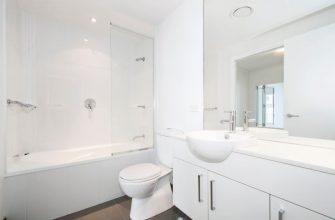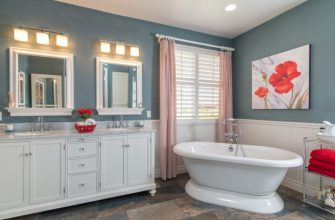Making bathrooms accessible for people with disabilities is an important aspect of inclusive design. Installing handicap bathroom accessories can help enhance accessibility and allow people with limited mobility or other impairments to use the restroom safely and comfortably.
This comprehensive guide will cover the basics of accessible bathroom design, highlight essential handicap accessories, provide tips on installation, and offer customization ideas. Understanding the benefits of handicap bathroom accessories and how to properly incorporate them can help ensure your bathroom is usable for all people, regardless of physical ability.
- Importance of Accessibility in Bathroom Design
- Benefits of Handicap Bathroom Accessories
- Understanding Handicap Bathroom Design
- Overview of Handicap Bathroom Requirements
- ADA Compliance and Regulations
- Universal Design Principles
- Safety Considerations for Handicap Accessible Bathrooms
- Essential Handicap Bathroom Accessories
- Grab Bars and Handrails
- Accessible Toilet Seats and Bidets
- Walk-in Tubs and Roll-in Showers
- Non-slip Flooring and Mats
- Accessible Sinks and Faucets
- Other Assistive Devices
- Installing Handicap Bathroom Accessories
- Professional Installation Considerations
- DIY Installation Tips and Tricks
- Tools and Materials Needed
- Step-by-Step Installation Guide for Common Accessories
- Customizing Your Handicap Bathroom
- Personalizing the Space for Specific Needs
- Adapting the Bathroom for Different Disabilities
- Mobility Impairments
- Visual Impairments
- Hearing Impairments
- Maintaining and Upgrading Handicap Bathroom Features
- Regular Maintenance and Safety Checks
- Upgrading to New Technologies and Innovations
- Final Thoughts on Enhancing Accessibility with Handicap Bathroom Accessories
Importance of Accessibility in Bathroom Design
Bathrooms are a necessity in our daily lives, but navigating them can be challenging for people with disabilities. An accessible bathroom design is crucial to allow people with mobility limitations, visual or hearing impairments, and other disabilities to use the restroom independently and safely.
Inaccessible bathrooms can increase the risk of slips or falls, make personal hygiene difficult, and generally reduce one’s quality of life. On the other hand, a bathroom decked out with handy handicap accessories enables increased independence and dignity.
Making bathrooms handicap accessible is also legally mandated in many public spaces under the Americans with Disabilities Act (ADA). Private homes may not be legally required to be accessible, but adding handicap features where possible is an excellent way to prepare for aging in place or accommodate disabled guests.
Benefits of Handicap Bathroom Accessories
Installing handicap bathroom accessories offers numerous benefits that enhance convenience, safety and accessibility for people with disabilities. Some key advantages include:
- Increased ease of use – Handicap accessories like grab bars, raised toilets, and lever faucets simplify bathroom tasks for those with limited mobility.
- Improved safety – Non-slip mats, textured flooring, ample lighting, and grab bars all help prevent dangerous slips and falls.
- Greater independence – Features like self-closing doors, easy-turn locks, and adjustable everything foster autonomy.
- Aging in place – Handicap accessible bathrooms allow people to remain in their homes as mobility decreases with age.
- Accommodating guests – Accessible bathrooms enable friends/family with disabilities to comfortably visit your home.
- Higher property value – Handicap accessible homes often have higher resale values due to increased demand.
Careful planning and selection of handicap bathroom accessories makes bathrooms safer, more comfortable and usable for those with limited mobility. Investing in accessibility supports independence and improves quality of life.
Understanding Handicap Bathroom Design
Overview of Handicap Bathroom Requirements
Designing an accessible bathroom requires careful planning and adherence to standards that support users with mobility limitations. Two key guidelines for accessible bathrooms are legal requirements under the ADA and principles of universal design.
The ADA mandates minimum accessibility standards for public restrooms, like those in businesses and public parks. Universal design refers to design aesthetics that promote easy use for all people, regardless of age or ability. Using universal design principles to complement ADA bathroom requirements creates spaces that are legally compliant yet comfortable and welcoming.
ADA Compliance and Regulations
The ADA (Americans with Disabilities Act) is a civil rights law that prohibits discrimination based on disability. Under the ADA, all public accommodations and commercial facilities must meet accessibility standards for restrooms.
ADA bathroom requirements cover the layout, size, positioning of fixtures and installation of accessories. Standards include minimum dimensions for clear floor space, door widths, toilet heights, grab bar placements, counter heights and more. Following ADA bathroom guidelines is crucial for businesses and public spaces.
Universal Design Principles
While ADA standards focus primarily on accessibility for wheelchair users, universal design principles create bathrooms usable by all people. Universal design goes beyond legal minimums to maximize ease of use, safety and aesthetics.
Principles like creating wide paths of travel, selecting easy-grasp lever handles, using contrasting colors, and installing adjustable accessories make bathrooms accessible and user-friendly for all ages and mobility levels.
Safety Considerations for Handicap Accessible Bathrooms
Since bathrooms, especially showers, carry increased risk of slips and falls, addressing safety is paramount when designing handicap accessible bathrooms. Key factors that enhance bathroom safety include:
- Non-slip, low-pile flooring.
- Contrasting floor/wall colors.
- Ample lighting, with switches at accessible heights.
- Plenty of grab bars near toilets and showers.
- Adjustable/hand-held shower heads.
- Quick-draining shower floors.
Keeping these safety considerations in mind when planning grab bar placements, flooring, lighting and other features creates an accessible bathroom that also minimizes risk of injury.
Essential Handicap Bathroom Accessories
Certain handicap bathroom accessories are absolutely essential to create an accessible, easy-to-use restroom environment. Equipment like grab bars, raised toilets, walk-in showers and lever faucets enhance convenience and safety.
Grab Bars and Handrails
Grab bars are essential accessibility tools that provide stability and support balance. Properly installed grab bars near toilets, showers and tubs make sitting, standing and maneuvering much easier and safer.
ADA standards provide exact specifications for grab bar placement and installation. Height and location requirements depend on where bars are positioned. Generally, sturdy grab bars should be present behind and beside toilets, inside showers, alongside tubs and on at least one wall.
Accessible Toilet Seats and Bidets
Installing a taller, ADA-compliant toilet makes sitting and standing easier for people with hip, knee and back issues. Elevated toilets must meet height requirements and have ample clear floor space. Grab bars, plus toilet paper within arms reach, maximize accessibility.
Bidets, either stand-alone or integrated into toilet seats, enhance hygiene and reduce straining. With features like warm water and air drying, bidets can be used independently by people with limited mobility.
Walk-in Tubs and Roll-in Showers
Walk-in tubs allow safe bathing while seated. Inward-swinging doors and low thresholds simplify access. Other features like slip-resistant floors, grab bars and hand-held shower wands maximize ease of use.
Roll-in showers have no lip or threshold, enabling easy wheelchair entry. Adjustable shower heads and seats, back/side grab bars and fold-down railings offer assistance while bathing.
Non-slip Flooring and Mats
Floors and mats with grippy, non-slip textures promote stability and prevent hazardous falls. Materials like rubber, textured porcelain tile, slip-resistant vinyl and high
vinyl and high-traction carpet meet ADA codes. Water-draining shower mats also reduce slipping.
Accessible Sinks and Faucets
ADA standards require accessible sink height and clear knee space underneath. Insulated pipes protect from contact. Lever-style faucets are easier to operate than knobs for those with limited dexterity.
Other Assistive Devices
Other helpful handicap accessories include raised toilet seats, adjustable shower chairs, hand-held shower wands, long-handled scrubbers, easy-to-use soap and towel dispensers, motion-activated faucets and doors, and more.
When used alongside essentials like grab bars and non-slip flooring, these items help further promote safe, independent bathroom use for disabled individuals.
Installing Handicap Bathroom Accessories
Proper installation of handicap bathroom accessories follows ADA guidelines and manufacturer instructions to ensure safety. While professional installation is ideal for some equipment, DIY is possible for simpler accessories.
Professional Installation Considerations
Complex handicap bathroom equipment like walk-in tubs/showers, grab bars, and wall reinforcements require professional installation. Licensed experts thoroughly understand ADA requirements and follow intricate installation procedures.
For example, grab bars must withstand over 250 pounds of force. Improper placement or use of inadequate wall backings risks bars pulling out. Hiring a qualified technician ensures correct and safe installation of heavy-duty handicap accessories.
DIY Installation Tips and Tricks
For simpler accessories like raised toilet seats, shower chairs, adjustable shower heads and non-slip adhesive mats, DIY installation is totally feasible. Following included manufacturer directions and ADA guidelines helps guarantee proper positioning.
Tools and Materials Needed
Typical tools and materials needed for DIY handicap bathroom accessory installation include:
- Tape measure.
- Pencil/marker.
- Level.
- Screwdriver.
- Wrench.
- Power drill.
- Appropriate screws/bolts.
- Silicone adhesive.
Ensure you have all necessary equipment before beginning independent installation.
Step-by-Step Installation Guide for Common Accessories
Follow these basic steps when installing handicap accessories like grab bars, raised toilet seats, shower benches and non-slip decals/mats:
- Read all instructions thoroughly first.
- Measure area and mark proper positioning per ADA standards.
- Drill pilot holes if necessary.
- Securely fasten accessory using included hardware.
- Check item is fully stable with no shifting or rotation.
- Apply silicone sealant around edges of wall-mounted equipment.
Always double-check measurements and solidity of installation to confirm safety. Check directions for weight capacities and precise mounting procedures.
Customizing Your Handicap Bathroom
While meeting ADA bathroom requirements is crucial, it’s also important to personalize the space for your unique accessibility needs and preferences.
Personalizing the Space for Specific Needs
Not all disabilities are the same, so customizing accessories for your individual impairments enhances comfort and ease of use. Options like:
- Adjustable grab bars.
- Hand-held, flexible shower heads.
- Bidets with controls usable without hand strength/dexterity.
- Motion-activated faucets/doors.
- ADA-compliant cabinets for those using wheelchairs.
These items boost independence for those with mobility limitations. Consult an occupational therapist for personalized accessory ideas.
Adapting the Bathroom for Different Disabilities
Mobility Impairments
For wheelchair users, essential elements include wheelchair-accessible routes, grab bars beside toilets and showers, adjustable shower seats and non-slip flooring. Hand-held shower wands and long-handled scrub brushes also increase independence.
Visual Impairments
The visually impaired benefit from high color contrast between walls, floors and accessories. Tactile markers, braille signs, ample lighting and audible/vibration notifications on equipment aid those with limited vision. Keeping consistent layouts also helps memory.
Hearing Impairments
For the hearing impaired, adjustable/blinking lights paired with vibration notifications on equipment alert to water temperate, shower duration and other bathroom activities. Install bright, uniform lighting able to illuminate users’ faces so lip reading is possible.
Choosing accessories to suit specific physical or sensory impairments allows customization for maximum comfort, accessibility and independence while using the bathroom.
Maintaining and Upgrading Handicap Bathroom Features
To continually reap the benefits of accessible bathrooms, properly maintaining equipment and upgrading features is key. Performing routine checks and installing new innovations keeps bathrooms safe and maximizes independence.
Regular Maintenance and Safety Checks
All handicap bathroom equipment should undergo regular inspections and upkeep to confirm proper function and spot potential issues. Generally, a weekly check entails:
- Testing grab bars are securely fastened.
- Checking non-slip mats/decals are fixed in place.
- Confirming shower seats are steady.
- Inspecting caulking around showers/tubs for mildew.
- Assessing faucet function and drainage speed.
- Evaluating lighting brightness.
Perform repairs and replacements immediately if attachments loosen, equipment cracks or lighting dims. This prevents unsafe conditions.
Upgrading to New Technologies and Innovations
Advances in accessible bathroom technology provide new equipment options to stay up-to-date. Sensor-activated faucets, auto-opening doors, adjustable smart toilets with built-in bidets and walk-in tubs with aromatherapy features are just some recent innovations.
Upgrading handicap bathroom features ensures maximum accessibility, safety and convenience to support independence and enhance quality of life.
Final Thoughts on Enhancing Accessibility with Handicap Bathroom Accessories
Installing handicap bathroom accessories makes restrooms safer and more usable for people with disabilities. Following ADA guidelines and universal design principles allows creation of bathrooms accessible to diverse ability levels.
Grab bars, non-slip floors, lever faucets and adjustable fixtures are essentials that enable easier mobility. Customizing spaces to suit individual needs through specialized equipment increases ease of use.
Properly maintaining handicap accessories through scheduled safety checks and upgrading to the latest innovations helps continually provide accessible, comfortable bathrooms supportive of independence and dignity.

